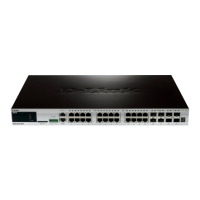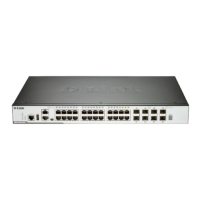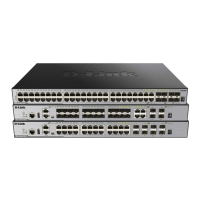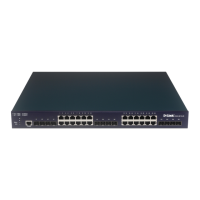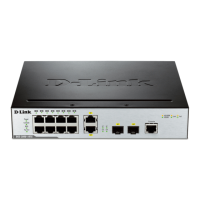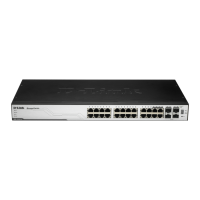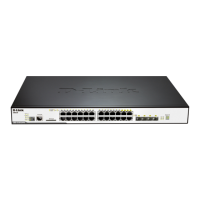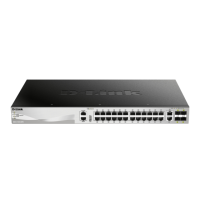xStack® DGS-3620 Series Managed Switch Web UI Reference Guide
94
Figure 4-40 MSTP Port Information window
To view the MSTI settings for a particular port, use the drop-down menu to select the Port number. To modify the
settings for a particular MSTI instance, enter a value in the Instance ID field, an Internal Path Cost, and use the
drop-down menu to select a Priority.
The fields that can be configured are described below:
Parameter Description
Select the unit you want to configure.
Select the port you want to configure.
Instance ID The MSTI ID of the instance to be configured. Enter a value between 0 and 64. An
entry of 0 in this field denotes the CIST (default MSTI).
Internal Path Cost
(1-200000000)
This parameter is set to represent the relative cost of forwarding packets to specified
ports when an interface is selected within an STP instance. Selecting this parameter
with a value in the range of 1 to 200000000 will set the quickest route when a loop
occurs. A lower Internal cost represents a quicker transmission. Selecting 0 (zero) for
this parameter will set the quickest route automatically and optimally for an interface.
Priority Enter a value between 0 and 240 to set the priority for the port interface. A higher
priority will designate the interface to forward packets first. A lower number denotes a
Click the Find button to locate a specific entry based on the information entered.
Click the Apply button to accept the changes made.
Click the Edit button to re-configure the specific entry.
Link Aggregation
Port trunk groups are used to combine a number of ports together to make a single high-bandwidth data pipeline.
The Switch supports up to 32 port trunk groups with two to eight ports in each group.
Understanding Port Trunk Groups

